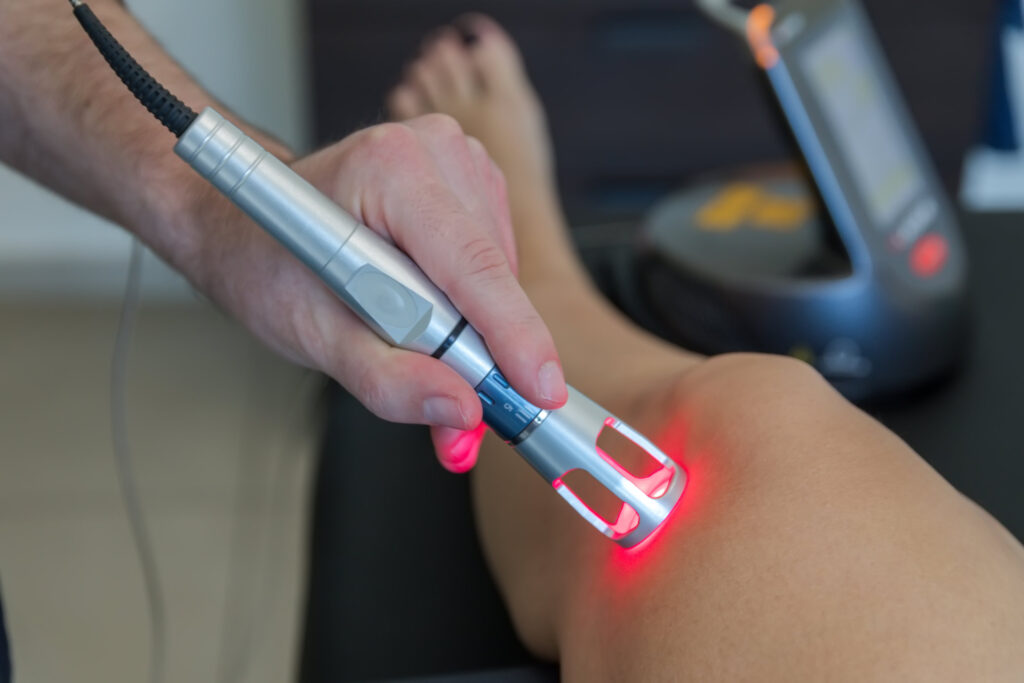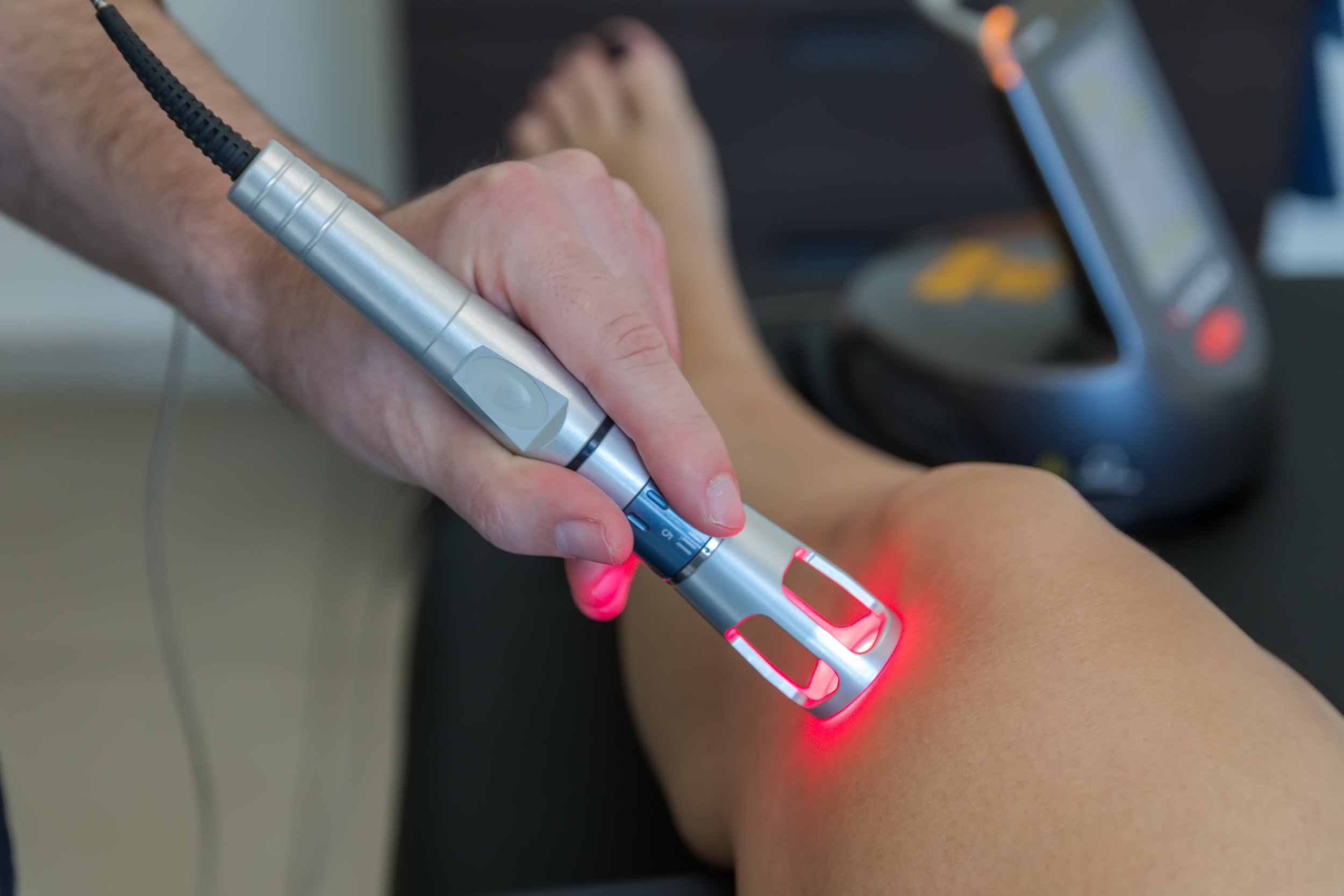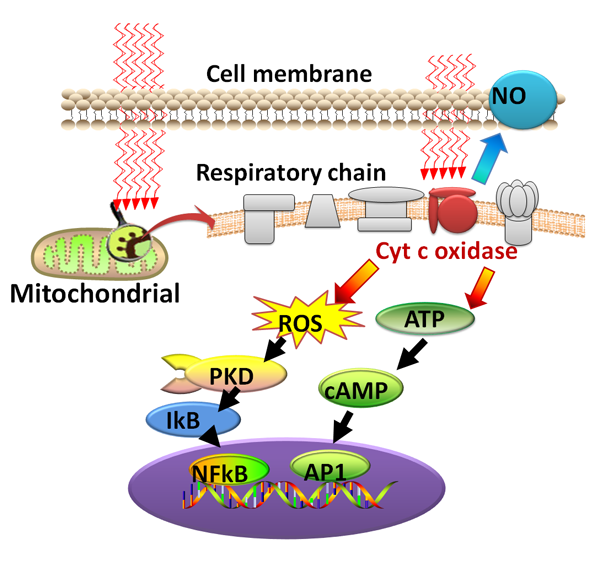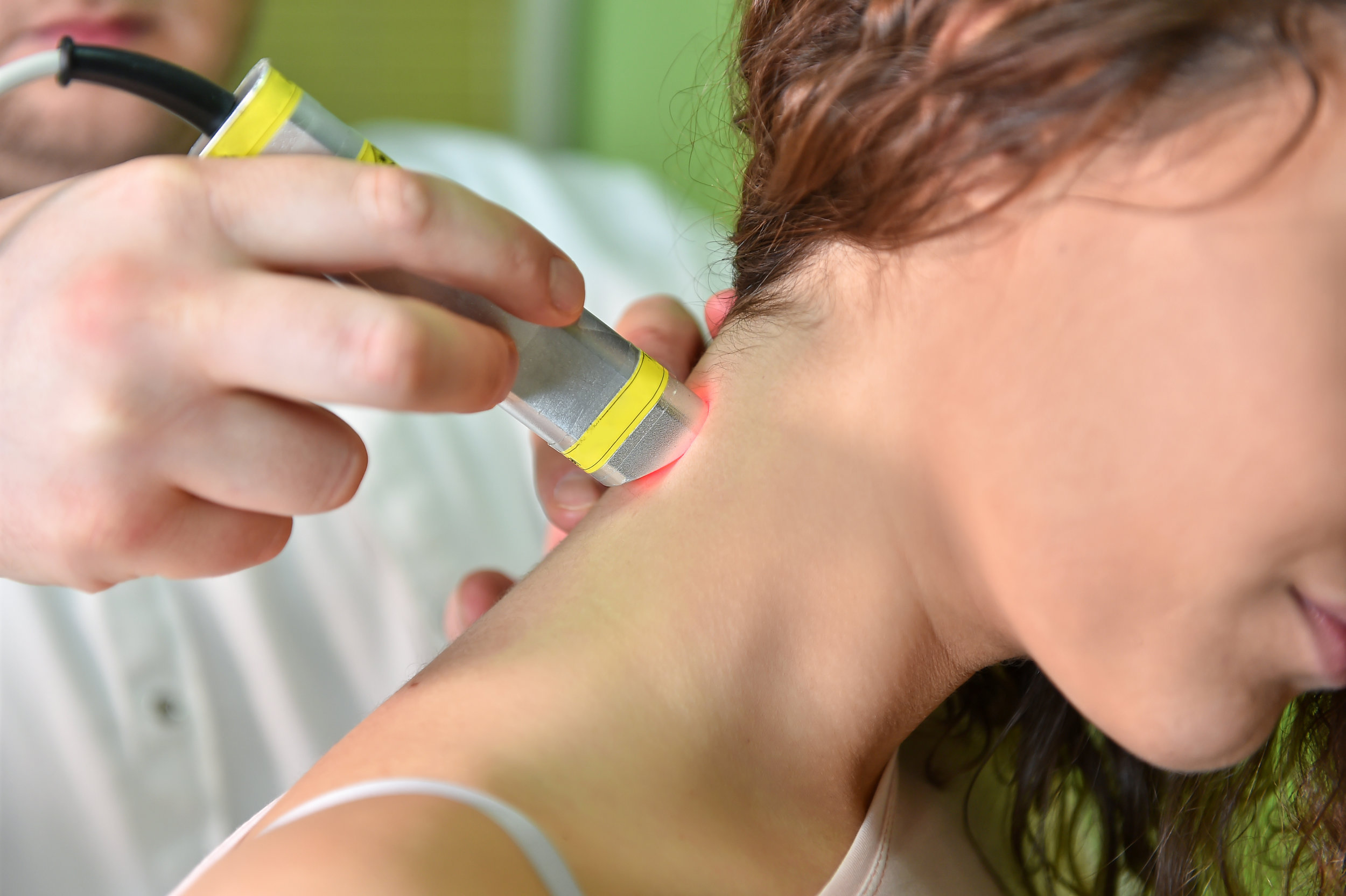The use of low level laser therapy (LLLT) aka cold laser therapy has become more popular to help reduce pain, inflammation, and a slew of other purported benefits. I took a look at the research to determine its true effectiveness and safety of use.
The use of low level laser therapy (LLLT), colloquially known as cold laser therapy because the laser used – typically a class IIIB laser – isn’t strong enough to induce a thermal effect, to reduce pain and expedite healing has become more and more widespread. Its use has gradually migrated from the medical rehabilitation world to the commercial world of daily consumers looking for the next cutting-edge technology to help with their ailment.
The theory behind why LLLT works and how it induces changes is that the red or near infrared light from the laser helps trigger biochemical changes within the cells. These changes are only photochemical in nature, not thermal (hence no warming sensation). For this reason, LLLT is also commonly known as photobiomodulation (PBM).
The use of light radiation for therapeutic purposes stems back farther than you might think, to the turn of the 20th century and Dr. Nils Finsen who was awarded a Nobel Prize in 1903 for his work on using light radiation to treat disease. However, the basis for laser therapy wasn’t discovered until nearly 63 years later when a group of researchers demonstrated the aforementioned phenomeon of laser bio stimulation.
As lasers became more portable and cost effective, they became increasingly adopted by the medical community, specifically because they seemed to have a pain reducing and anti-inflammatory effect on patients. Currently, LLLT is used by millions of medical providers with the market for laser therapy growing steadily.
However, the question as always is: Does low level laser therapy aka cold laser therapy actually work?
The short answer is possibly, particularly when it comes to helping alleviate chronic pain.
The long answer is it depends on what exactly you’re using it for. The physiological changes and mechanisms of LLLT are still not well understood and tend to very broad when studied. Theories on the mechanism range from there possibly being an increase in pain (nociceptive) threshold to a rise in natural endorphins and opiodes in the body to augmented levels of nitric oxide in the bloodstream – nitric oxide is a vasodilator, meaning it expands the arteries leading to increased blood flow and therefore increased healing. The reality is just we’re just not sure how it works.
That being said, there’s growing evidence that LLLT has an analgesic (pain reducing) effect for specific conditions. For example, large-scale research on using LLLT to reduce neck pain showed decreases in short and long-term neck pain for up to 22 weeks after therapy.
Further, limited studies have found that LLLT can be effective in reducing subject measures of plantar fasciitis and knee pain. Lastly, LLLT may be useful in treating and reducing achilles tendinopathy pain, when used in combination with eccentric exercise (the gold standard for achilles tendinopathy rehab).
In other cases, such as ankle sprains and low back pain, LLLT hasn’t shown much promise. In all of these cases, LLLT hasn’t been shown to do any harm to the injury or induce negative changes.
Many of these studies need to be taken with a grain of salt due to small sample sizes, conflicts of interest with some researchers financially tied to the laser device manufacturers, and differences in overall dosage and wavelength. Ideally, future research will address these issues so we can come to more accurate and definitive conclusions while determining a standardized protocol and standard of care.
So I get the feeling you might be wondering “ok cool bro, appreciate the info, but what’s your recommendation here?”
Based on all the information presented and everything else I’ve read, my recommendation is this: If you’re having persistent or long-standing muscular pain, especially of the neck or plantar fascia, then go ahead and give LLLT aka cold laser therapy a shot and see how you respond to it. There’s no guarantee it will work but it won’t do any harm and it could serve to reduce pain levels. It’s one tool in the tool bag to possibly help alleviate pain and improve function. If you do go ahead with LLLT, make sure the laser is a class IIIB laser and not a class IV laser as the latter is increasingly being marketed as a stronger, more effective laser (and thus a bigger price tag per treatment) which simply isn’t true.
Thanks for reading, until next time, and remember, health and performance are two sides of the same coin.
Sources:
-
Chow RT, Johnson MI, Lopes-Martins RAB, Bjordal JM. Efficacy of low-level laser therapy in the management of neck pain: a systematic review and meta-analysis of randomised placebo or active-treatment controlled trials. Lancet (London, England). 2009;374(9705):1897-1908. doi:10.1016/S0140-6736(09)61522-1.
-
Cotler HB, Chow RT, Hamblin MR, Carroll J. The Use of Low Level Laser Therapy (LLLT) For Musculoskeletal Pain. MOJ Orthop Rheumatol. 2(5). doi:10.15406/mojor.2015.02.00068.
-
Dima R, Tieppo Francio V, Towery C, Davani S. Review of Literature on Low-level Laser Therapy Benefits for Nonpharmacological Pain Control in Chronic Pain and Osteoarthritis. Altern Ther Health Med. October 2017. http://www.ncbi.nlm.nih.gov/pubmed/28987080.
-
Guzman J. Neck pain and low-level laser: does it work and how? Lancet (London, England). 2009;374(9705):1875-1876. doi:10.1016/S0140-6736(09)61837-7.
-
Kingsley JD, Demchak T, Mathis R. Low-level laser therapy as a treatment for chronic pain. Front Physiol. 2014;5:306. doi:10.3389/fphys.2014.00306.
-
Macias DM, Coughlin MJ, Zang K, Stevens FR, Jastifer JR, Doty JF. Low-Level Laser Therapy at 635 nm for Treatment of Chronic Plantar Fasciitis: A Placebo-Controlled, Randomized Study. J Foot Ankle Surg. 54(5):768-772. doi:10.1053/j.jfas.2014.12.014.
-
van den Bekerom MP, van der Windt DA, Ter Riet G, van der Heijden GJ, Bouter LM. Therapeutic ultrasound for acute ankle sprains. Cochrane database Syst Rev. 2011;(6):CD001250. doi:10.1002/14651858.CD001250.pub2.
-
Yousefi-Nooraie R, Schonstein E, Heidari K, et al. Low level laser therapy for nonspecific low-back pain. Cochrane database Syst Rev. 2007;(2):CD005107. doi:10.1002/14651858.CD005107.pub2.



